Razer Blade 14-Inch Gaming Notebook Review
by Dustin Sklavos on July 2, 2013 1:00 PM ESTGaming Performance
What struck me while testing the Razer Blade 14-inch in gaming was just how fast it actually was. The NVIDIA GeForce GTX 765M is an unusually powerful part for this class, and in circumstances where it isn't limited by its 128-bit memory bus, it's actually capable of performing faster than last generation's GeForce GTX 580M. Getting the performance equivalent of a GTX 580M (or desktop GeForce GTX 560) in a 14-inch notebook is remarkable.
We're also benefitting from NVIDIA's GPU Boost 2.0; while the nominal clock of the GTX 765M is 797MHz, I monitored GPU clocks with GPU-Z during gaming and found that the core never dropped below 901MHz. The thermal design of the Blade also proved itself, with the GPU running at a remarkably low 74C.

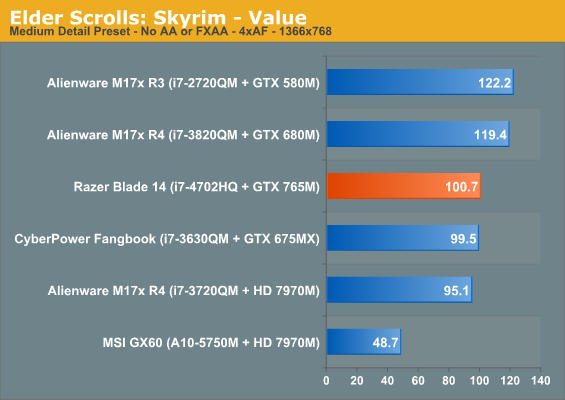
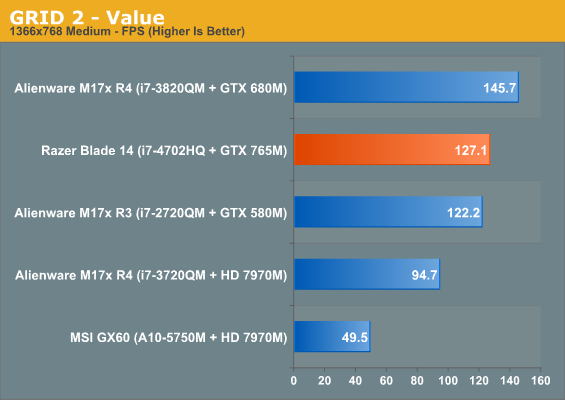

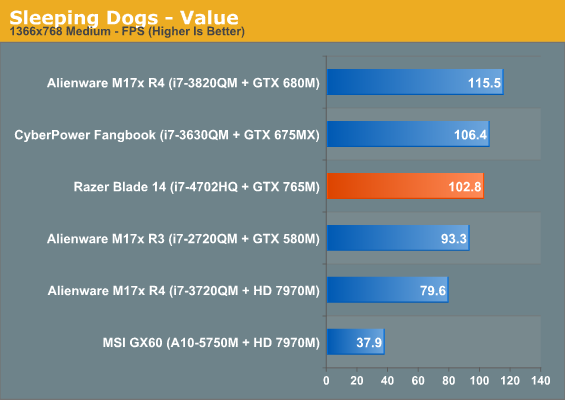
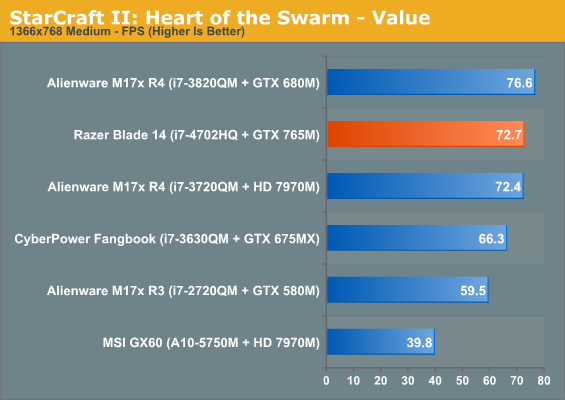
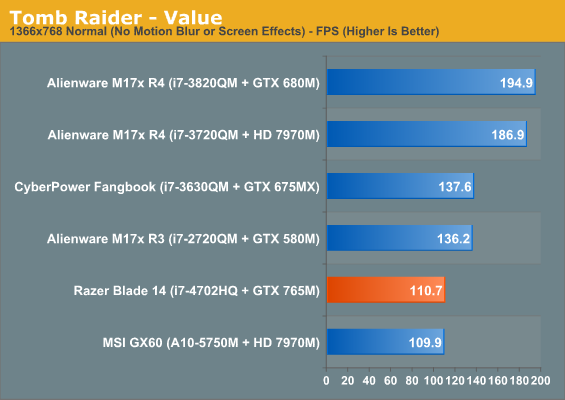
Obviously with a dedicated gaming system there's very little reason to run at our "Value" settings, but this is more to create a frame of reference for the "Mainstream" and "Enthusiast" settings. It's interesting to see the 765M sort of "dance around" the Value charts.
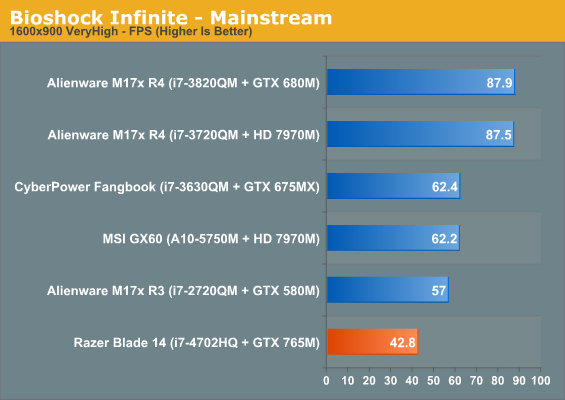
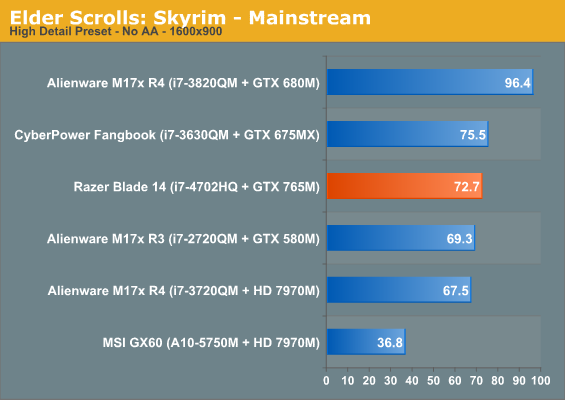
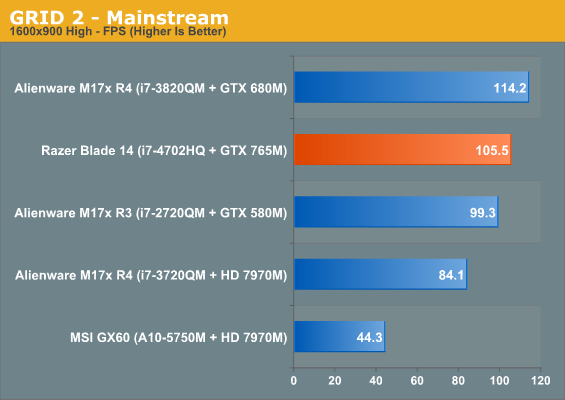
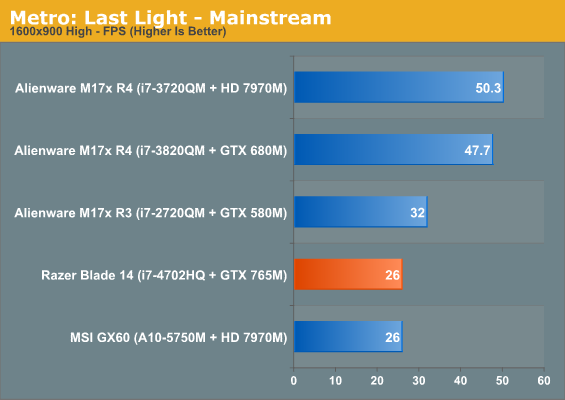
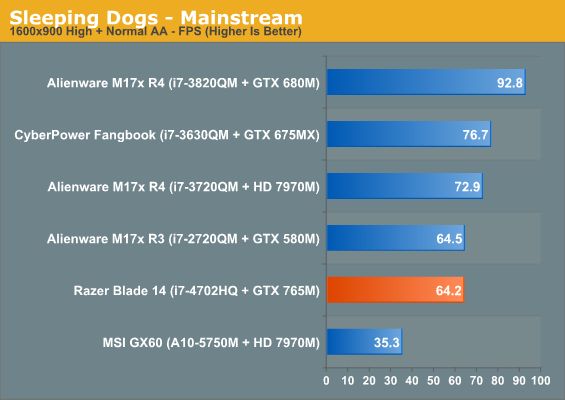
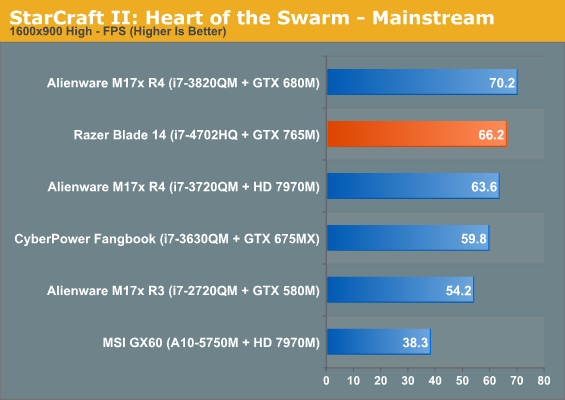
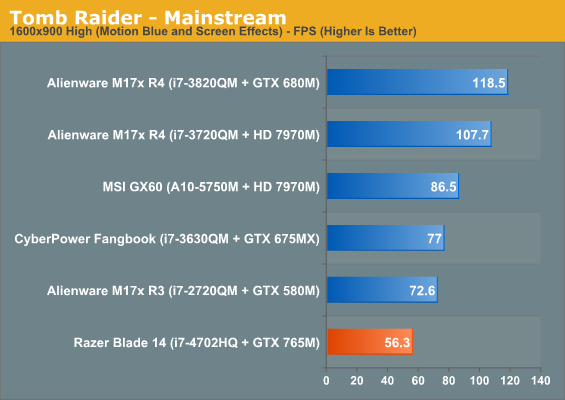
Get to our mainstream settings and it's easy to see the places where the 765M is starting to buckle. It provides playable performance in every game, but certain ones seem to be hitting up against the limited memory bandwidth.
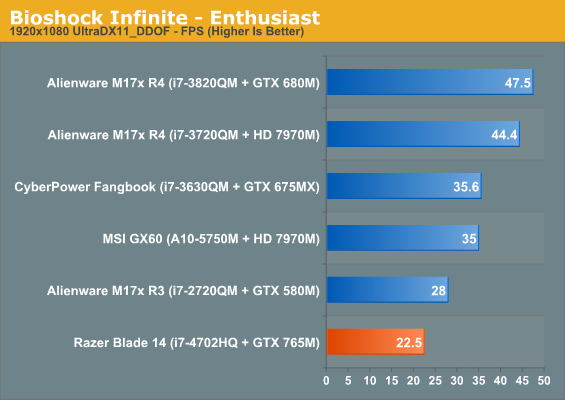
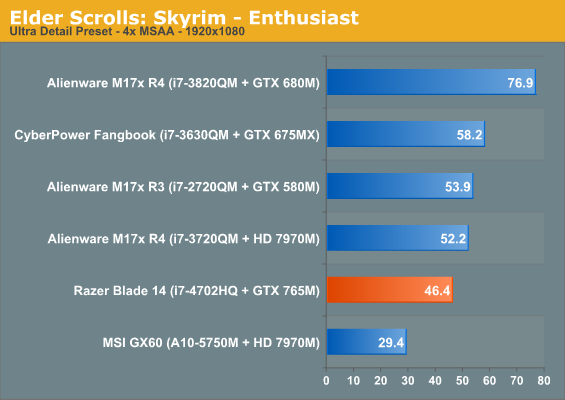
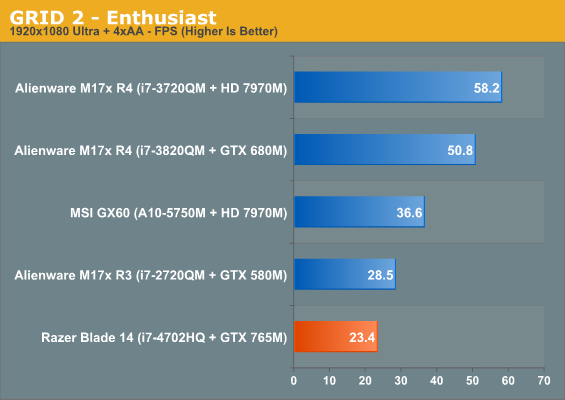
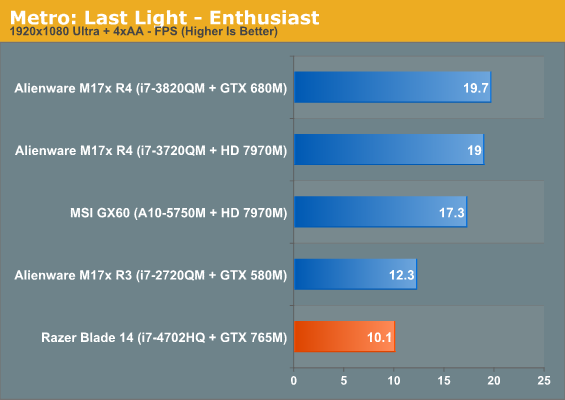
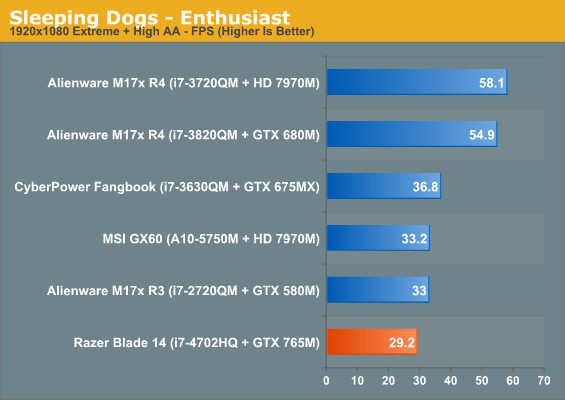
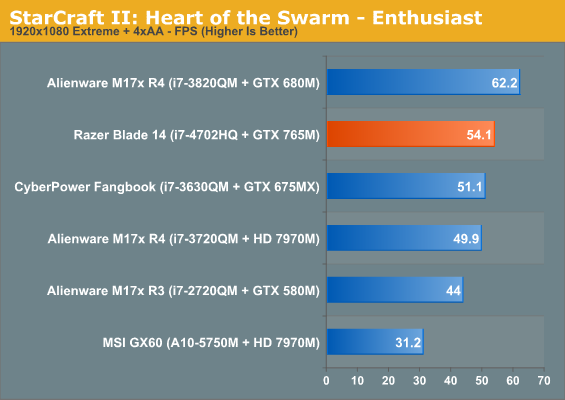

Unsurprisingly, bumping the resolution and adding anti-aliasing murders performance. At this point the memory subsystem is definitely overloaded and can't handle the demands being made upon it. 1080p gaming should be possible in most titles on the 765M if you're willing to cut anti-aliasing and reduce some settings, though.










108 Comments
View All Comments
Dustin Sklavos - Tuesday, July 2, 2013 - link
If you think the rest of the industry is any different, I have a bridge to sell you. We review what we're sent, same as anyone else.But that doesn't make us a mouthpiece. I'd like to think we're pretty critical; we may review what we're sent, but we put the screws to it.
bji - Tuesday, July 2, 2013 - link
Why do you review only what you're sent? Can't you have a budget where you buy hardware, review it, and then re-sell it? Every review would cost a couple hundred bucks to produce but that can't be much averaged over the time you spent writing the review (if I spent 20 hours writing a review, the time cost would far exceed a couple of hundred dollars spent on the hardware), and also, you make advertising revenue ...p1esk - Tuesday, July 2, 2013 - link
Very good point. Besides, it would easy to resell when you have a huge audience of potential buyers.resination - Tuesday, July 2, 2013 - link
Heh. "This laptop is overpriced junk. Click here to buy ours."MySchizoBuddy - Tuesday, July 9, 2013 - link
point well made.kevith - Tuesday, July 2, 2013 - link
Seriously? Should Anand Lil Shimpi run around, shopping for hardware to review? And after reviewing it, they should spend time trying to resell it?I really don´t think that would work...
flyingpants1 - Tuesday, July 2, 2013 - link
Yes.Have a donation/kickstarter system to fund the hardware review budget. Once something is reviewed, slap a fancy Anandtech logo on it and sell it for a 20% loss.
Anything would be better than sitting and waiting for a manufacturer to send you a cherry-picked sample.
MySchizoBuddy - Tuesday, July 9, 2013 - link
the purpose of a reviewer is to test honestly what was handed to them. whether it is given to them or bought is irrelevant.JarredWalton - Tuesday, July 2, 2013 - link
A few hundred dollars isn't much less than what most hardware reviewers get paid to begin with. "Hey, can you go buy that $900 laptop, review it, resell it for $700, and we'll pay you the standard $400 for your review?" Reviewing hardware is nice, but when a full review can take 20-40 hours to put together (sometimes more), you can see that investing even four or five extra hours starts to really cut into the revenue/income.Then there's the fact that outside of Lenovo, we generally get most of the laptops that are really worth reviewing. We don't need to review every budget laptop, and we don't have the manpower to do so -- and the readership would get really tired of seeing multiple laptop reviews each week where 90% of the laptops are "average" -- okay for a certain price point, but with various flaws.
Should we need to essentially pay for the privilege of reviewing a specific manufacturer's hardware? Now add in the time it requires to resell a laptop, and the risk of fraud, and it's a big can of worms I'm not really keen to open. In fact, I know one site that tried to do this with desktop systems some years ago so that they could really see what the end user experience was like, including calling tech support to troubleshoot a problem. The reviews ended up not generating enough revenue to cover their cost, the section basically got axed, and the reviewer in question ended up working for one of the big tech companies.
JarredWalton - Tuesday, July 2, 2013 - link
I should also note that buying your own review units means your reviews will be, at best, several weeks after everyone else. That's not the end of the world, but it does mean about one third the traffic as being one of the first reviews.